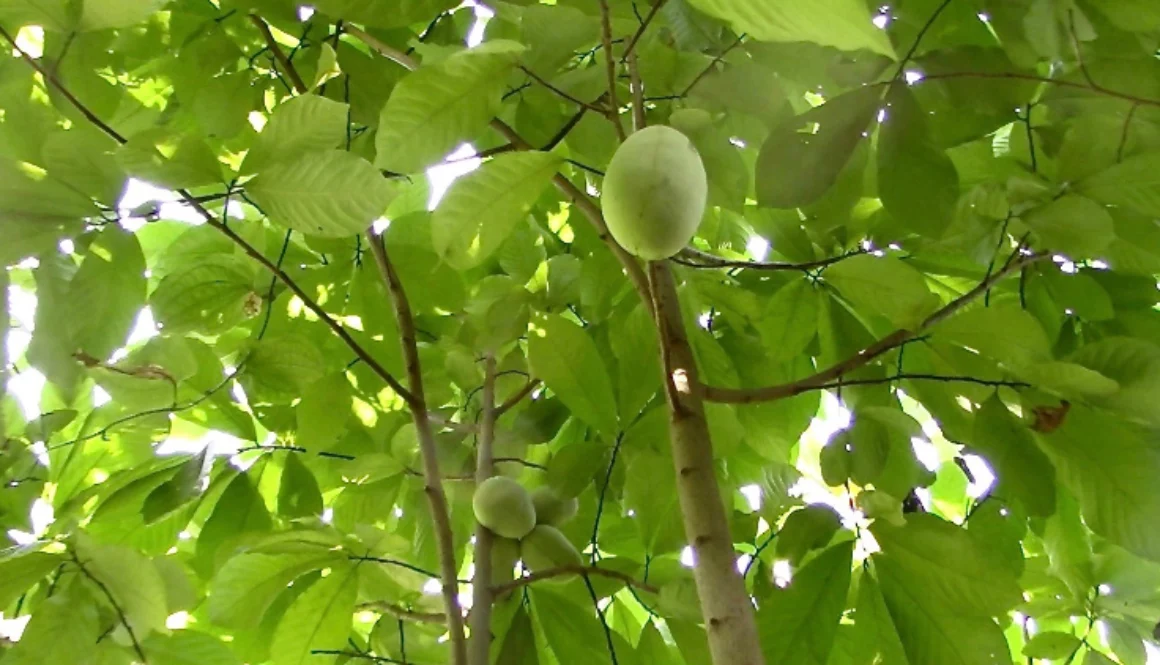The Virginia Paw Paw Tree: A Hidden Gem of the American Forest
The Virginia paw paw, scientifically known as Asimina triloba, is a small deciduous tree native to the eastern United States. Often overshadowed by more popular fruits, the paw paw holds a unique position in America's natural and cultural heritage. It thrives in the understory of hardwood forests, particularly along riverbanks and in rich, well-drained soils.
Physical Description: An Unassuming Presence
Typically growing to a height of 10 to 20 feet, the Virginia paw paw is modest in size. Its large, broad leaves turn a striking yellow in the fall, offering a visual treat. The tree's flowers, which appear in early spring, are small and inconspicuous, with a deep purple hue. However, the most remarkable feature of the paw paw tree is its fruit.
The Fruit: America’s Forgotten Banana
The paw paw fruit is the largest edible fruit native to the United States. Oval-shaped and green, it turns yellow-brown when ripe. The flesh is soft, creamy, and custard-like, often compared to a banana or mango in both texture and taste. The fruit contains several large, dark brown seeds.
Culinary Uses: A Versatile Ingredient
Paw paw is a versatile culinary ingredient. It can be eaten fresh or used in various recipes, including ice creams, smoothies, baked goods, and even savory dishes. Its unique tropical flavor makes it a delightful addition to the American fruit palette.
Nutritional Benefits: A Nutrient Powerhouse
The paw paw is not only tasty but also packed with nutrients. It is rich in antioxidants, vitamins C and A, magnesium, iron, and dietary fiber. These nutritional qualities make it a healthy addition to any diet, supporting immune function and overall well-being.
Ecological Significance: A Keystone Species
Ecologically, the paw paw plays a crucial role. It provides habitat and food for wildlife, including the zebra swallowtail butterfly, whose larvae feed exclusively on paw paw leaves. This ecological relationship highlights the tree’s importance in maintaining biodiversity.
Historical and Cultural Importance
Historically, the paw paw has been a significant food source for Native Americans and early European settlers. Thomas Jefferson cultivated paw paws at Monticello, and Lewis and Clark reportedly subsisted on them during their expedition when other food sources were scarce.
Challenges and Conservation
Despite its benefits, the paw paw faces challenges. It is often difficult to cultivate due to its unique pollination requirements, as the flowers are pollinated by flies and beetles rather than bees. Conservation efforts are focused on maintaining its natural habitats and educating the public about this native treasure.
The Virginia paw paw tree, with its delicious fruit, nutritional benefits, and ecological importance, is a true gem of American flora. It represents not only a unique culinary opportunity but also an integral part of the country’s natural heritage. As interest in native and sustainable foods grows, the paw paw stands poised for a well-deserved resurgence in popularity.
This hidden gem, with its rich history and promising future, invites us to explore and appreciate the lesser-known bounty of the natural world. The Virginia paw paw tree, in all its understated glory, is more than just a fruit-bearing tree; it is a symbol of natural abundance and resilience.
